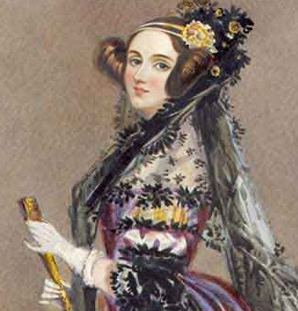How to Inspire the Next Generation of Female Makers
The problem isn’t interest. When asked, more than 70 percent of teen girls say they are interested in STEM fields and subjects, yet only 18 percent of engineering graduate students are female. So where’s the disconnect?
Here are some responses to the question, “How can we engage, and keep, girls engaged in STEM?”
FIND MORE FEMALE ROLE MODELS: Both girls and boys need to see more females in leadership roles in engineering. This includes more female technology teachers. Female role models enable all kids to visualize what women in STEM look like.
BROADEN THE NARRATIVE: STEM topics have traditionally been presented in a very narrow way; girls might not see ways to apply STEM skills that align with their interests. Pursue gender-neutral lessons and experimentation to include all.
PUT THE “A” in STEM: Bringing the “A” into STEM means incorporating the arts into science, technology, engineering, and math. Art and creativity can make STEM more relatable to girls, who tend to gravitate toward storytelling, inventions that help others, and role-playing.
EXPOSE GIRLS TO STEM CONSISTENTLY: Exposure, both at home and in the classroom, is key. Expose girls to technology concepts early (and often!), so that it becomes the norm. Help their male peers to recognize hidden biases when they arise, and without shaming anyone, talk about it.
ENCOURAGE INDIVIDUALITY: Teach all kids that there is no “wrong” or “right” way to engage in STEM, and that they should pursue STEM topics in ways that resonate with them. For STEM programs to be effective and interesting, we need to teach them in effective and interesting ways.
Women Pioneers in Tech
Heddy Lamarr
Wireless Visionary
Largely known as a screen star of the 1920s, Hedy Lamarr proved to be more than just a pretty face. She played a key role in the invention of spread-spectrum technology; specifically, by conceptualizing the idea of frequency hopping, which is a method of sending radio signals from different frequency channels.
Lamarr and her co-inventor, George Antheil, developed the technology originally to help the Navy remotely control torpedoes. The key value of frequency hopping was that the randomized channel switching made it difficult for outside agents to understand what was being communicated. It was, in essence, an early form of encryption technology.
Grace Hopper
Programming Pioneer
Called the Queen of Software by some and Grandma COBOL by others, Navy Rear Admiral Grace Hopper helped invent some of the early English-language programming languages. She is most famously associated with the Common Business-Oriented Language (COBOL), which was based on the FLOW-MATIC language that she designed back in 1958.
Before the invention of such language-based programming, computers spoke exclusively in binary code, which was illegible to human beings. Hopper was convinced that if programming were produced in a form that anyone could read, then there would be more programmers. It turns out that she was right.
Ada Lovelace
Algorithm Guru
Ada Lovelace was unique in that she developed an algorithm for a computer that didn’t yet exist — an accomplishment that some say qualifies her as the world’s first computer programmer.
Born to English nobility in 1815, Lovelace was put to work by Charles Babbage in 1843, documenting his never-to-be-realized “computer,” the Analytical Engine. Starting with a document written in French by Luigi Menabrea, an Italian mathematician, Lovelace added extensive notes to the English translation, including the world’s first computer algorithm.
The Analytical Engine was intended to count Bernoulli numbers, but Babbage was unsuccessful in getting the funding to build his machine. Notably, Lovelace was able to see the potential for the computer beyond simple math.
Roberta Williams
Gaming Genius
Perhaps best known for her adventure game series “King’s Quest,” which went all the way to an eighth sequel, Roberta Williams was a pioneer and visionary in creating and popularizing this niche of PC games. Sierra On-Line was the name of company (later known as Sierra Entertainment) that Williams co-founded with her husband, Ken Williams. Together, they helped shape the history of video games with their complex puzzles and detailed storylines.
You can see hints of Williams’ ideas and concepts in other gaming genres, like fighting games, which almost always include a “quest” mode, in which the fighter must battle his way through a series of bouts and achievements to seal his victory. You can also draw a link to our current obsession with gamification in many nongaming contexts. Williams’ games taught logic and problem-solving skills, but made it seem like an adventure the entire time, in much the same way that gamification transforms seemingly mundane things like, location check-ins, into an exciting quest to collect digital badges.





